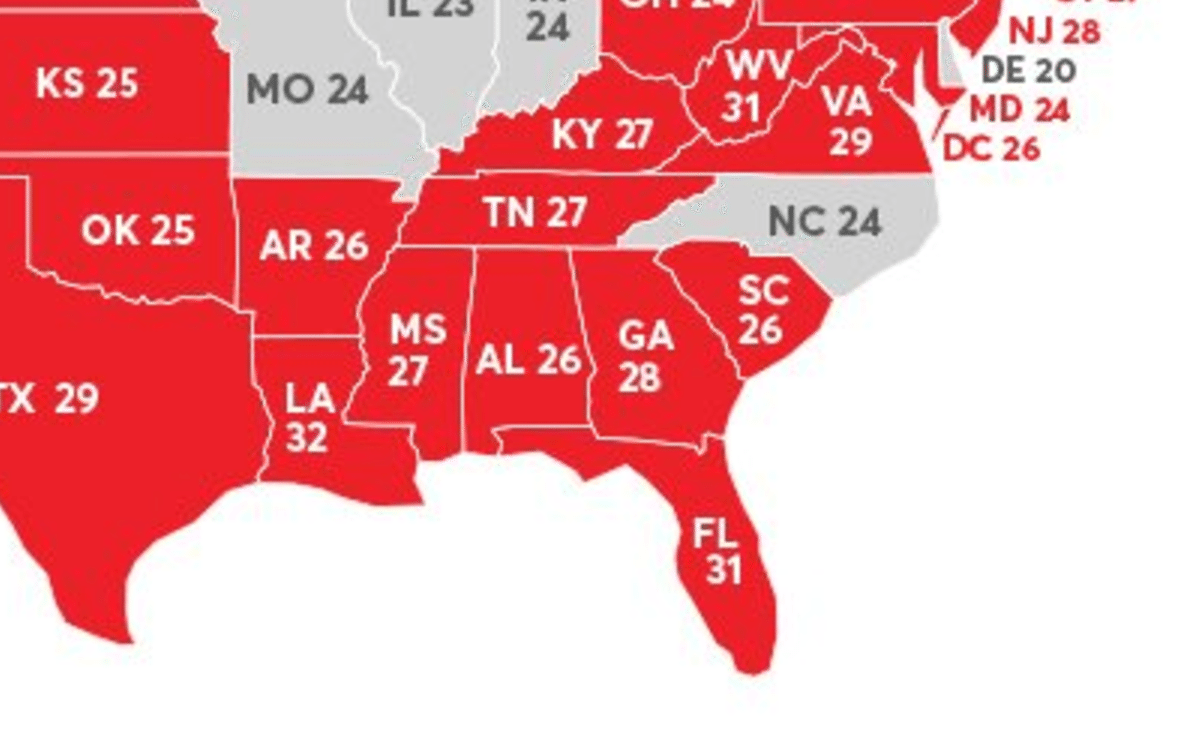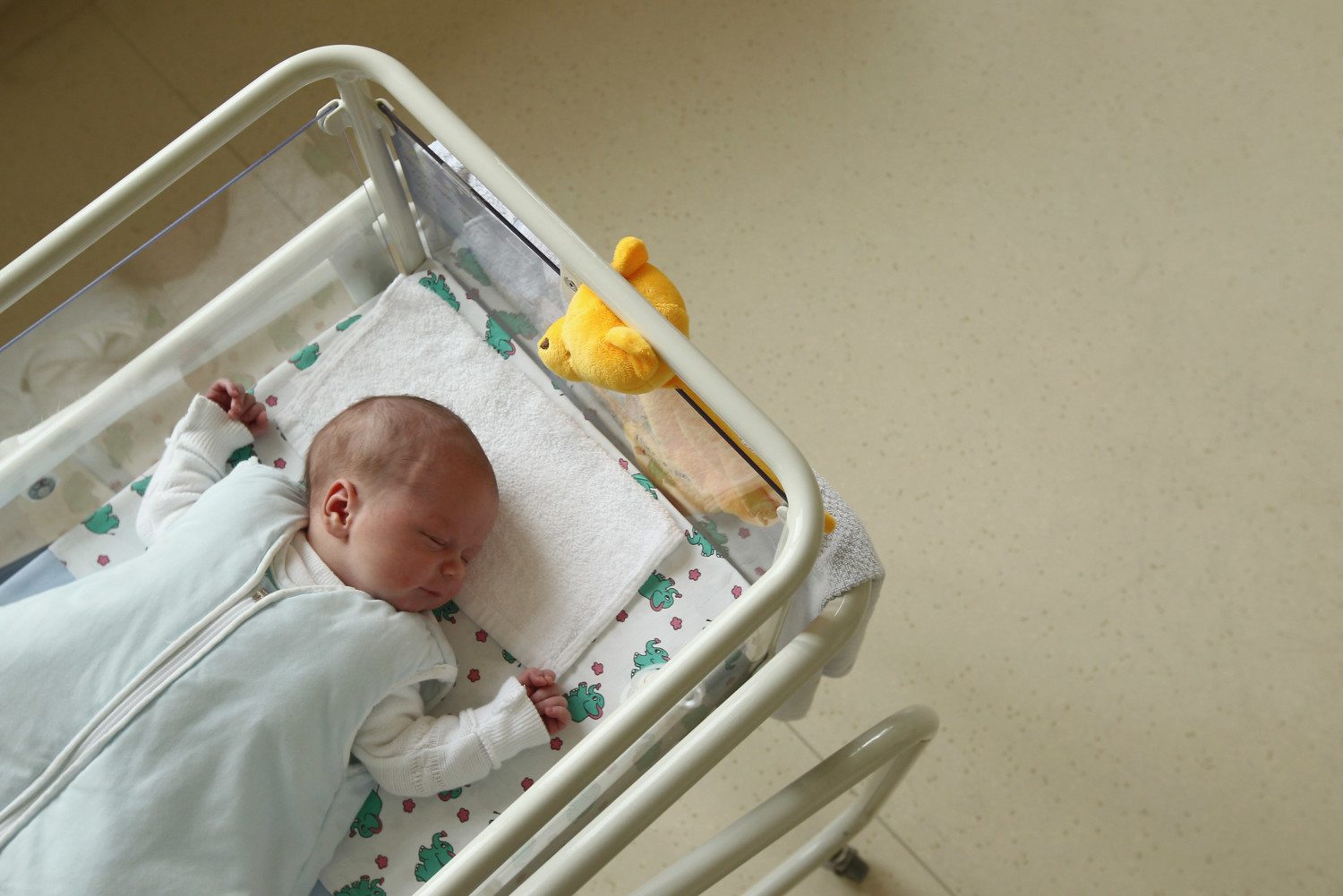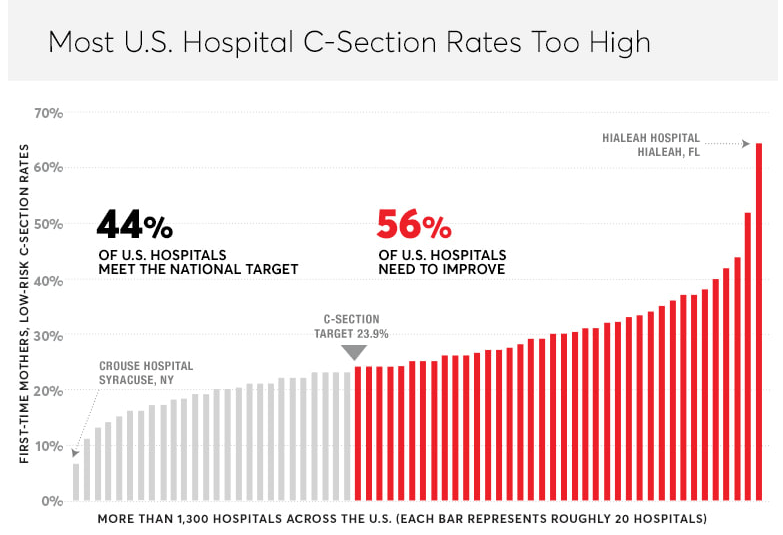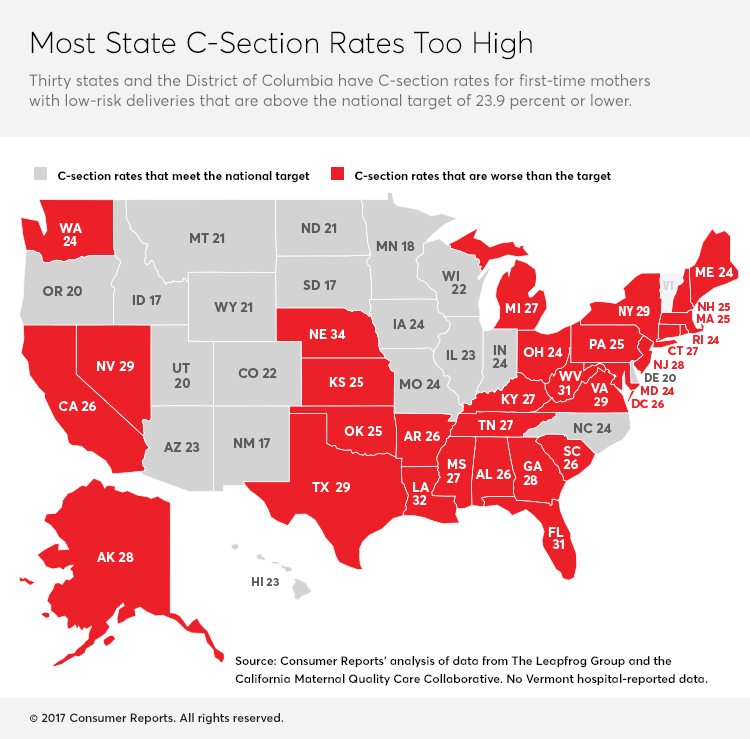This map shows the rate of C-sections in each state

The pending birth of a baby brings up so many questions. Where will they sleep? How do I change a diaper? Bottle or breast? What am I going to name it?
And then there are the questions about labor and the birth itself. Doctor or midwife? Epidural or au naturale? Will I poop? Vaginal delivery or C-section?
It’s that last question that’s been the topic of concern for researchers in recent years as cesarean rates in the U.S. have climbed. According to the Centers for Disease Control and Prevention (CDC), cesarean rates are at an all-time high, accounting for 32 percent of all births in the United States. This is a startling statistic given that the majority of women, when asked, would prefer to deliver vaginally.
So why are roughly 1.3 million babies born via C-section in the U.S. each year? Consumer Reports says that while some are medically necessary, others may have less to do with mom and more to do with the birthing hospital itself. While there are some factors—weight, diabetes or age—that can make a C-section more likely, the biggest risk factor is “the hospital a mother walks into to deliver her baby, and how busy it is,” says Neel Shah, M.D., an assistant professor of obstetrics, gynecology, and reproductive biology at Harvard Medical School, who has studied C-section rates in the U.S. and around the world.
Given this information, what can moms do to avoid the unnecessary C-sections?
One step is to take a look at your hospital’s statistics. Consumer Reports’ hospital rating system includes C-section rates for low-risk women at 1,300 hospitals:
Taking a look at the list, it’s clear that C-section rates for low-risk deliveries vary greatly from hospital to hospital. So these stats can be used as a jumping-off point to discuss C-section rates with your doctor.
While rates vary greatly from hospital to hospital, rates also vary greatly from state to state, too. Take a look at this Consumer Reports map to see how your state stacks up:
If your state is in the red, you’re not alone. In fact, 30 states have C-section rates higher than the national goal of 23.9 percent for low-risk women with no prior cesarean births.
The good news? States like California are taking steps to improve. The California Health Care Foundation has launched an initiative to lower the state’s C-section rate for low-risk mothers to under 23.9 percent by 2020. And other states are following suit. Oklahoma implemented the C-Section Quality Initiative in 2011 to decrease their primary C-section rate to 18 percent or less.
Elliott Main, M.D., the medical director of the California Maternal Quality Care Collaborative, told Consumer Reports that hospitals should be able to achieve this rate, and some hospitals could aim even lower. And if hospitals have lower rates, so do states.
“No one is saying that C-sections are never necessary, and no woman should feel bad if they end up needing one,” he said. “The goal is to better support women in labor so that indications for C-sections do not develop.”
Better support for moms and babies? Sounds like a good goal to me.








